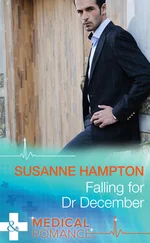Marcia looked over the assortment and chose one of the energy drinks. Kane picked up a bottle of water.
She thanked John for setting up the presentation and asked him to reserve the conference room for the next two days, momentarily recalling Kane’s original advice. She put the binder in her attaché case, gave the combination lock a spin and placed it on top of the conference table.
She turned to John and said, “I’ll be back for this later.”
“I’ll lock up here for now. Just have me paged when you need access again,” he answered. “I’ll be nearby.”
Marcia picked up her notebook and turned to Kane. “Lead on.”
It would require seven hours to tour the seven garment facilities. Elegant’s production plants were separated by major product lines, jackets and outerwear, combinations (suit jackets, slacks and skirts), dresses, Neo-Weaves (sweaters, suits, dresses and skirts), wraps (scarves and shawls), tops (blouses and sweaters) and bottoms (slacks and skirts). At each plant they viewed the fabric production (weaving, knitting or fusing) that was unique to the garments being produced and the measuring, cutting, sewing and finishing, all under CAD/CAM control in a continuous automated process mode. Most of the machines in the plants were Swiss built with a low incidence of down time.
Half-way through the circuit they stopped at one of the cafeterias catered by a local banquet company. Marcia nibbled on a salad and drank a cup of black coffee, Kane had a burger and a bottle of water. Conversation between them was minimal, and mostly limited to technical questions that she needed cleared up. When they left the cafeteria she picked up another energy drink.
The Neo-Weaves plant was second to last. Kane knew that Adam Hampton considered the line the “crown jewel” of Elegant Sportswear. He could tell that Marcia was impressed by the production of an entire garment as one continuous piece. Knit sweaters were on the production line when they arrived.
“Seamless one-piece construction provides the structural integrity of a single piece of fabric. Bulky stitches on conventional knit sweaters are gone, providing fit and comfort superior to any other textile product,” he proffered in his best tour guide voice.
“I’ve seen the advertising in magazines, but there is nothing like seeing and feeling an actual garment. It’s almost biblical; like Jesus’ robe. I can see now why Adam is so excited about the line. Seeing it makes you want to go buy one on the spot.”
“It’s Elegant’s fastest growing line, by far.”
Kane let his thoughts roam again. One of those knits would sure look great on that fabulous body of yours. Every curve would be accentuated. He caught himself, Where did that come from? I better keep my mind on business. Still, that’s one fine shape.
Marcia asked, “Is anyone even close to matching Elegant’s technology?”
“There are a few would be copycats, mostly Asian producers. They’ve mastered the design part of it, but they aren’t anywhere near automated manufacturing. Without machines to maintain integrity, they’re right back at item-to-item and batch-to-batch inconsistencies between runs, something that most high-end retailers won’t tolerate. I would guess that Neo-Weaves has a two to five year lead over the rest of the industry. The plant is struggling right now to fill orders within a two month lead time.”
“What will happen when a competitor finally puts it all together?”
“From an operational point I think Neo-Weaves would still have the edge. Quality remains the key issue. Elegant uses the finest fibers and their CAD/CAM processes assure integrity within sizes and batches. Also, Elegant is already experimenting with fabrics other than wool and cotton to expand the Neo-Weaves process to their other product lines. When they pull that off, it will be a real coup. No one will be able to catch them.”
They left the Neo-Weaves plant and moved next door to the last building on the tour. The Fiber Production Plant, nicknamed “FIPP” by the garment plants. The plant required the most environmental control due to the cleaning, carding, combing, drawing, roving, spinning, dying and drying of natural fibers and the chemicals used to produce manmade fibers. Huge fans were mounted in the ceilings of each process room. Exhaust from the fans was directed to a filter shed where the air was purified before it’s release into the atmosphere. Liquid washes and water used in production are piped to a treatment plant housed in the center of the Elegant complex.
“Well here we are. This is where it all begins.”
“Does it always smell so bad?” she asked, wrinkling up her nose.
“That’s a good question. It’s not usually so pungent. Let me find out what the problem is.”Kane walked over to one of the machinists, nodded his head a few times and returned to the entrance.
“It seems that their having a problem with the ventilation. The exhaust fans are designed to function regardless of wind flow, but lately, whenever the wind comes out of the east, the air backs up and the suction cuts down. They have tried several engineering changes, but so far nothing has worked. We can do this another time if you prefer.”
She thought about it for a few minutes. Plant workers as far as she could see didn’t seem to be bothered too much by the smell. “I guess if the employees working here can stand it, I can too. I’m sure that coming in from the outside probably makes it seem worse than it really is. Let’s give it a shot.”
Half an hour later they were back in the conference room. It was 4:30. Marsha offered, “That pretty much does it for today. Let’s meet back meet here tomorrow morning at 8 a.m. to document the production and maintenance records for all the plants and break those out by season. I’ll have the Hampton Sportswear files delivered here.”
They left the Communications Center and headed toward the parking lot. Marcia started to slow down. Kane hadn’t noticed that she was falling behind until he heard her gasp. He spun around just in time to see her start to swoon. He reached out to grab her shoulders just as she was starting to collapse.
“Whoa! That was close.” Kane half carried/dragged her to a bench and propped her up. She looked at him with a blank stare.
“What happened?” he asked.
“I’m not really sure. Suddenly I felt faint. It must have been the chemicals finally getting to me.”
“Or possibly it was all the caffeine you’ve been sluggin’ down all day. Too much of that stuff and not enough water will dehydrate you. Especially being on your feet for so many hours.”
“Perhaps you’re right. I did drink a lot of them.” she said softly.
“Will you be all right while I go back into the Center for some bottled water? I saw a machine in the lobby. A few bottles and you should feel a lot better. It happened to me once when I was jogging. I fell flat on my face and split my lip open.”
“Yes, I’ll be fine. Thank you.”
Kane returned a few minutes with five bottles of spring water. He sat down next to her as she drank the water. Ten minutes and three bottles of water later, Marcia was feeling well enough to get up and resume the walk to the parking lot. “I don’t know what I would have done if you weren’t here. Nothing like that has ever happened to me before.”
“Well, I’m glad I was here. I’d be careful about consuming so much caffeine. Those energy drinks are loaded with it. They can sneak up on you. Try regular water when you’re going to have an active day. You’ll be a lot better off.”
“I’m sure you’re right and those fumes probably contributed too.”
“That’s true. Are you going to be okay to drive?”
“Yes. I’m feeling a lot better now. I’m sure I’ll be fine.”
Читать дальше












